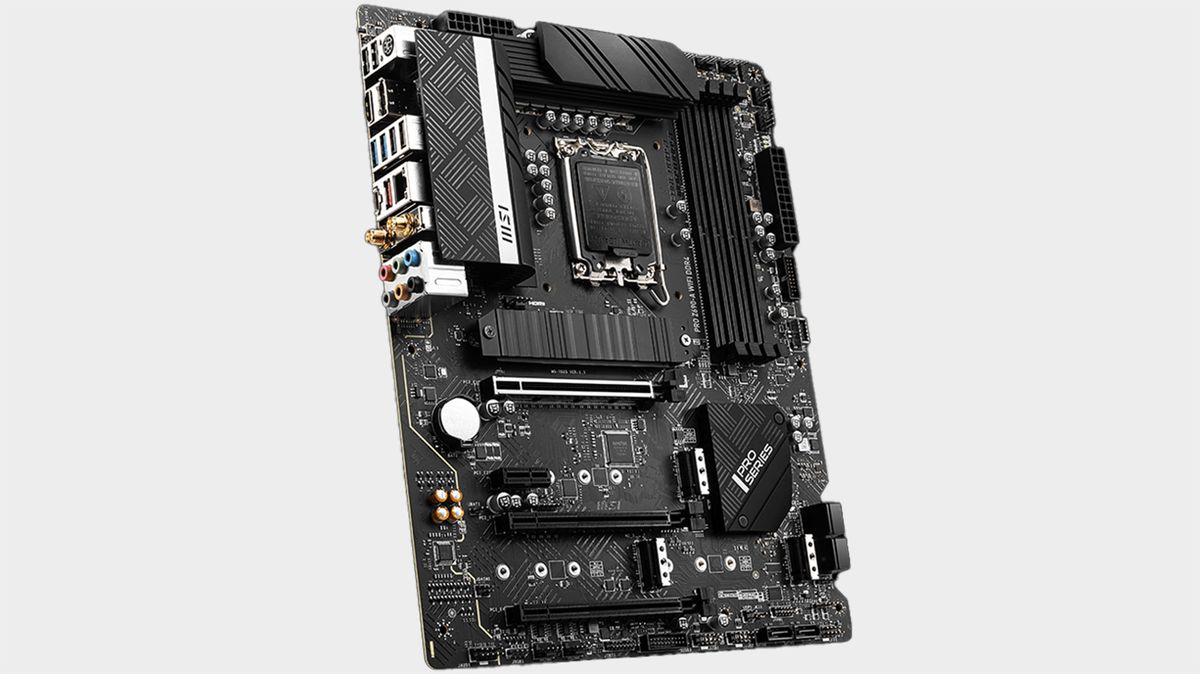- Joined
- Feb 16, 2012
- Messages
- 481
- Motherboard
- Asus Z790-P WiFi
- CPU
- i9-14900KF
- Graphics
- RX 6600
- Mac
- Classic Mac
- Mobile Phone
GC-Titan-Ridge-V2.0-Mod-NVM50-CaseySJ.binHi Ori, what firmware is on your Titan ?
GC-Titan-Ridge-V2.0-Mod-NVM50-CaseySJ.binHi Ori, what firmware is on your Titan ?

Oh my...An interesting project Open UEFI BIOS

There's huge potential for this 'unbrickable' open source BIOS now it's running on modern Intel PCs
Custom, open source BIOS software could offer tailored improvements over manufacturer spec ones.www.pcgamer.com
That's what Acidanthera's SSDT-CPUR is for with B550 chipset and newer…So I made a very interesting discovery early today. On a related note, it seems that the latest AMD Ryzen chipsets on their laptops share similar characteristics with the Alder Lake chipset in that processors are now also defined as devices.
Curious to see if this can be made to work with Monterey—assuming that 6600M is still Navi23 and could be supported by the drivers for desktop RX 6600. Power management is unlikely to be satisfactory for laptop use though.Someone had bought a Lenovo Legion 5 with a Ryzen 5800H & 6600M and had dumped their DSDT file for fault finding.
ACPI names are just names: Arbitrary 4-byte sequences. There's no value or operative meaning in these.Aside from the rename of SCK0 to PLTF and PR00 to C000, the setup is almost the same as with the Alder Lake output. I am suspecting this is also how the new Apple Silicon chipsets work in macOS (CPU is seen as a device rather than as a processor). It makes sense imo.
That's what Acidanthera's SSDT-CPUR is for with B550 chipset and newer…
Curious to see if this can be made to work with Monterey—assuming that 6600M is still Navi23 and could be supported by the drivers for desktop RX 6600. Power management is unlikely to be satisfactory for laptop use though.
ACPI names are just names: Arbitrary 4-byte sequences. There's no value or operative meaning in these.
Incidentally, Alder Lake has no socket object in the path, and multi-socketed Xeons use "module device" with _HID "ACPI0004" to define their sockets rather than "container device" with _HID "ACPI0010". No idea what this may imply: The ACPI specification describes both as objects acting as bus nodes in a namespace… It possibly just shows that there's more than one way to skin a cat and that Intel and AMD (or rather, ASMedia, which is the OEM for B550 and newer chipsets) use very different coding styles and code base.
As for AppleSilicon, I remember reading somewhere that it doesn't even use ACPI. Apple, being in full control of hardware and software can just do as it pleases.
You have missed (several instances of) the explanation in the mere 235 pages of this thread: ProvideCurrentCpuInfo works its magic by pretending that all threads are cores so macOS validates the CPU topology. Just live with it.in the Bios i have Hyper Threading enabled, all P Cores, all E cores, Speedstep etc, so in theory that should all be working as well on MacOS. Its a 12900k i9 i have fitted, so it should say 16 Core (8P & 8E) and 24 threads. on "System Report" its saying 24 core Hyperthreading disabled. Any way to correct this?
Am i missing something?
Get the PCI path from Hackintool and add cosmetic entries (device_type, model) as suits you under DeviceProperties…Finally is there some way to change the listing on hackintool USB to let me add the actual Controller name, instead of ??? as it reports. I know this is just a cosmetic thing, but it would be nice if i could edit these. as i have the device names as reported in windows.
Do you have the specially-modded SSDT-PLUG-ALT file? If you don't then that could be why. Technically you 'should' have because otherwise the system won't boot beyond verbose stage. Just to be sure, have ProvideCurrentCPUInfo under Kernel checked and CPUFriend, CPUFriendDataProvider.kext, SMCProcessor and SMCSuperIO are installed and make sure your SMBIOS is at least iMacPro1,1. That should ensure your system gets the correct readings.I finally got my Thunderbolt 4 GC-Maple-Ridge working, all my USB ports mapped, Resizable bar enabled, Audio working, etc. The last things I need to do now are sort out secure booting, and enabling the TPM, etc., in the BIOS.
I have a couple of questions for the others running Alder Lake. In the BIOS I have Hyper Threading enabled, all P Cores, all E cores, Speedstep, etc. So in theory that should all be working as well on MacOS. It's a 12900K i9 I have fitted, so it should say 16 Core (8P & 8E) and 24 threads. On "System Report" its saying 24 core Hyperthreading disabled. Any way to correct this?
Am I missing something? I have the CPU spoofed in OpenCore 0.7.9 to say its a Comet Lake, as that's the guide I followed on Dortania. As the recommended version to set up for Alder Lake, along with some other quirks, and deletion/substitution of SSDT's. to reflect the differences. The CPU shows correct power management setup in IOReg. giving back the expected data.
Finally is there some way to change the listing on hackintool USB to let me add the actual Controller name, instead of ??? as it reports. I know this is just a cosmetic thing, but it would be nice if I could edit these. As I have the device names as reported in windows.
